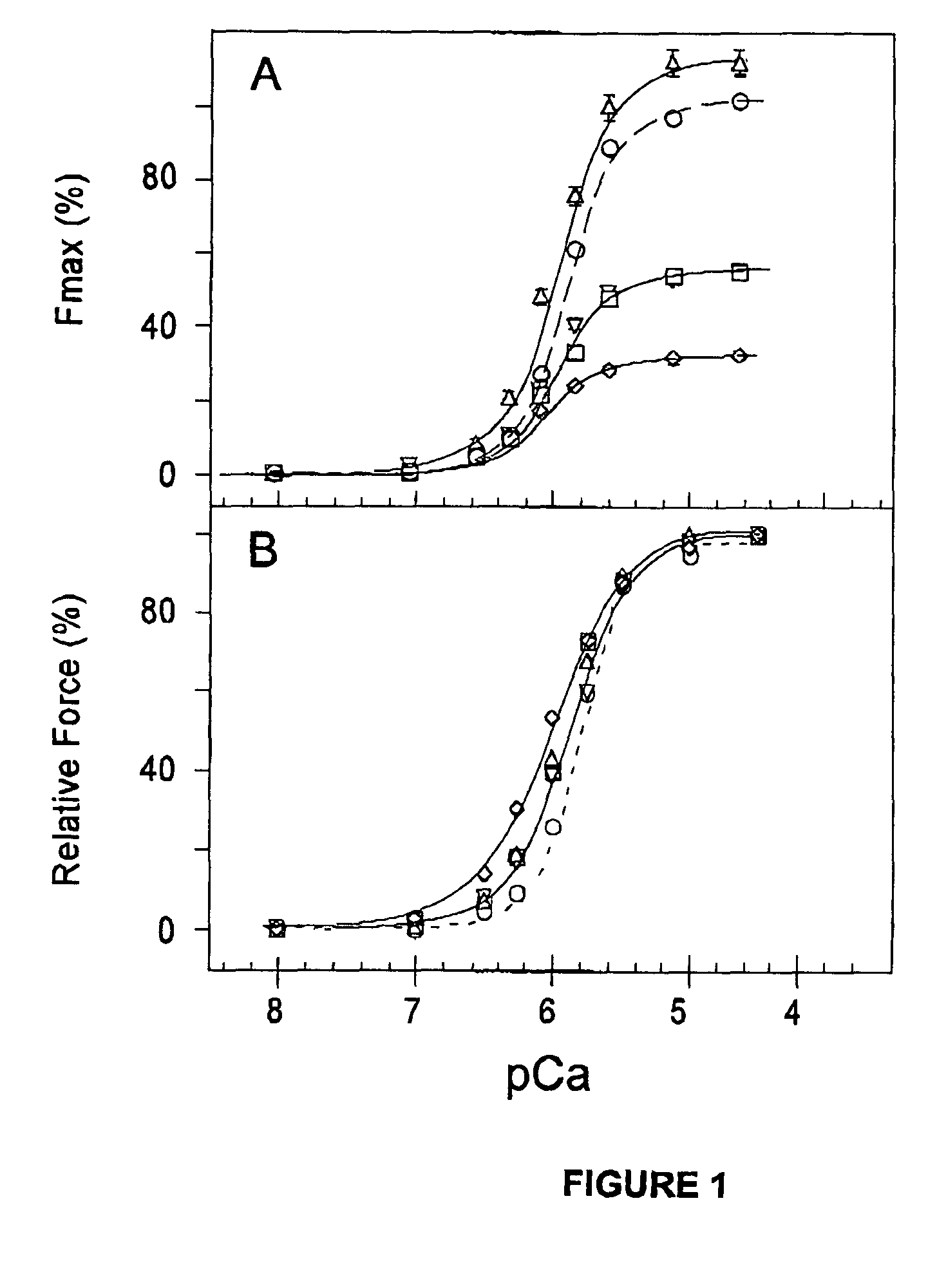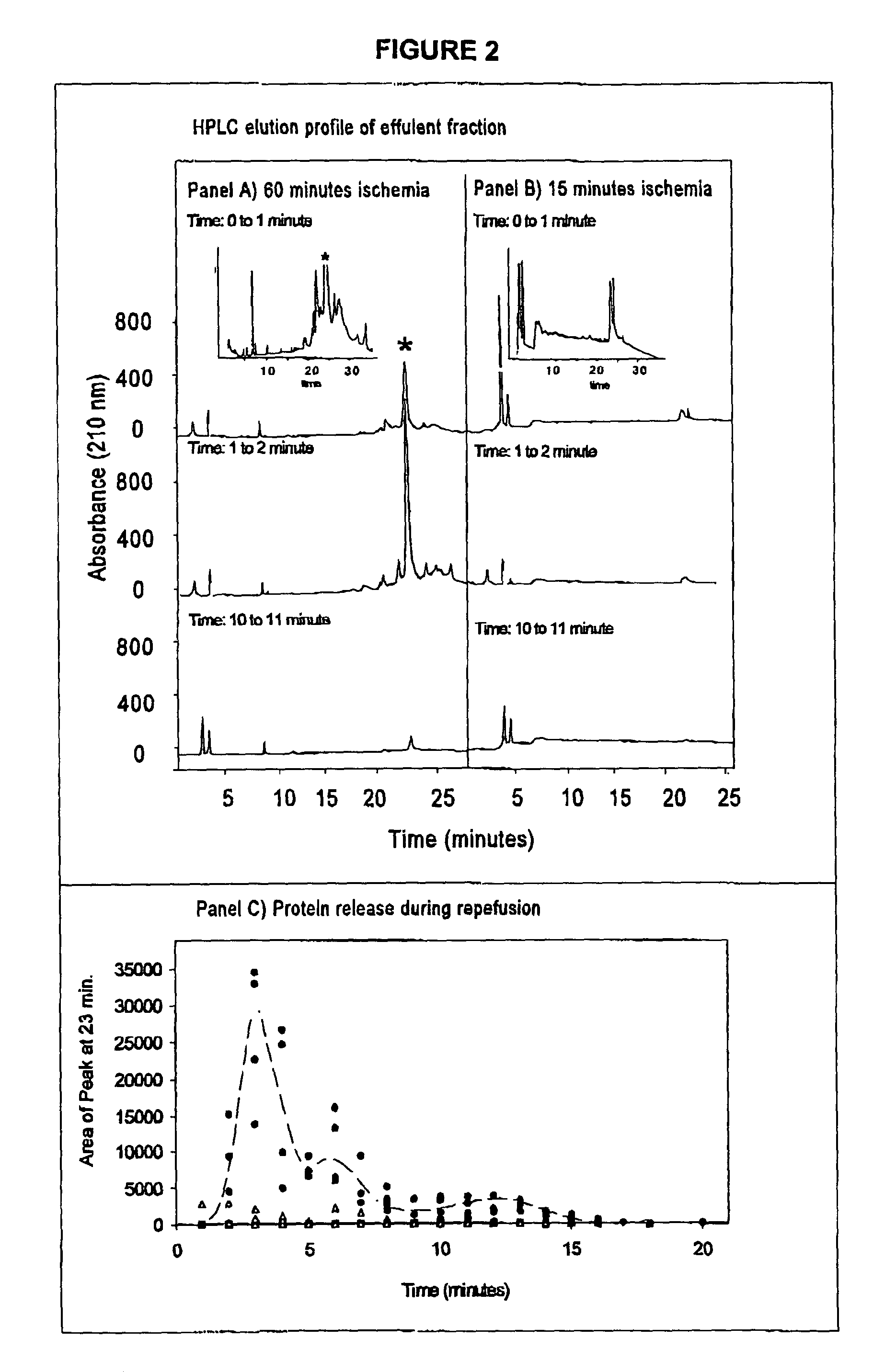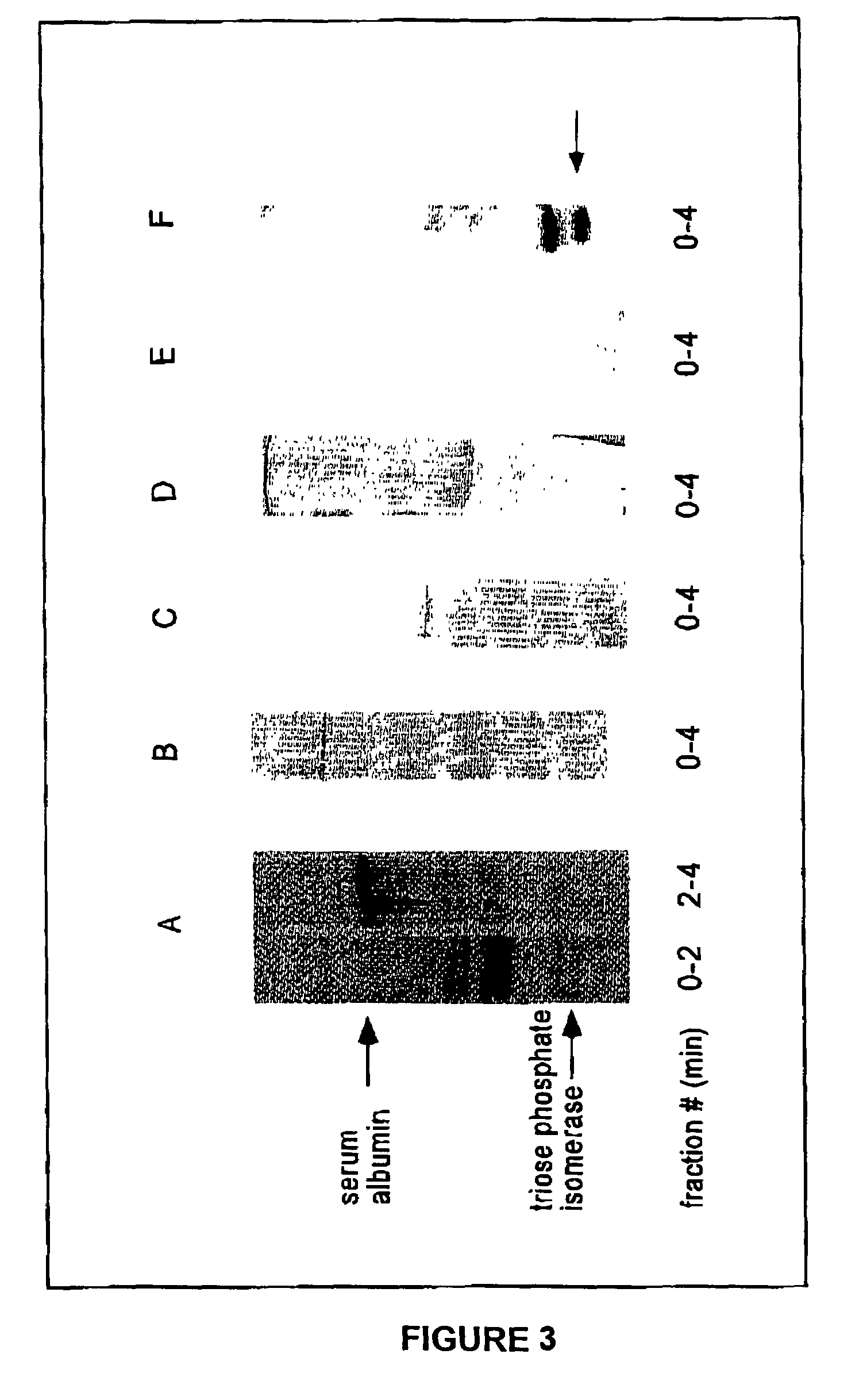Methods of diagnosing muscle damage
a muscle tissue and muscle tissue technology, applied in the field of muscle tissue cellular damage assessment, can solve the problems of ischemia producing irreversible damage, severe consequences, impaired muscle contractility,
- Summary
- Abstract
- Description
- Claims
- Application Information
AI Technical Summary
Benefits of technology
Problems solved by technology
Method used
Image
Examples
examples
[0087]I. Rat Cardiac Muscle
Preparation of Global Ischemic Model for Isolated Rat Hearts
[0088]To prepare a model of globally ischemic rat hearts, rats (250 to 350 g) were anaesthetized with ether, the hearts were excised and quickly placed in 2.5 ml of saline within an airtight plastic bag for 60 minutes at 4° C. (control) or 37° C. as described in Westfall et al. 1992, Circ. Res. 70:302-13. The left ventricle was removed and myofilaments isolated as described in Rarick et al. 1996, J. Biol. Chem. 271:1039-1043. A cocktail of protease inhibitors (50 μM phenyl methylsulfonyl fluoride, 3.6 μM leupeptin and 2.1 μM pepstatin A) was used at all steps of the isolation procedure. Isolated myofilaments were stored at −70° C. until preparation for SDS-PAGE analysis.
Perfusion of Isolated Rat Hearts
[0089]Cardiac function was measured in a non-recirculating Langendorff perfusion apparatus. Rats (250 to 350 g) were anaesthetized with sodium pentobarbital (50 mg / kg) and injected with heparin (200 ...
PUM
| Property | Measurement | Unit |
|---|---|---|
| pH | aaaaa | aaaaa |
| MW | aaaaa | aaaaa |
| molecular weight | aaaaa | aaaaa |
Abstract
Description
Claims
Application Information
 Login to View More
Login to View More - R&D
- Intellectual Property
- Life Sciences
- Materials
- Tech Scout
- Unparalleled Data Quality
- Higher Quality Content
- 60% Fewer Hallucinations
Browse by: Latest US Patents, China's latest patents, Technical Efficacy Thesaurus, Application Domain, Technology Topic, Popular Technical Reports.
© 2025 PatSnap. All rights reserved.Legal|Privacy policy|Modern Slavery Act Transparency Statement|Sitemap|About US| Contact US: help@patsnap.com



